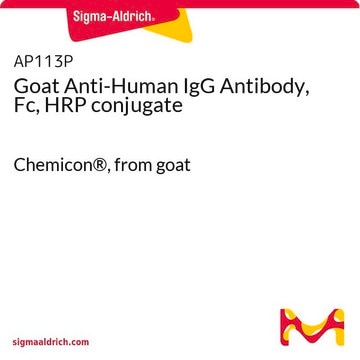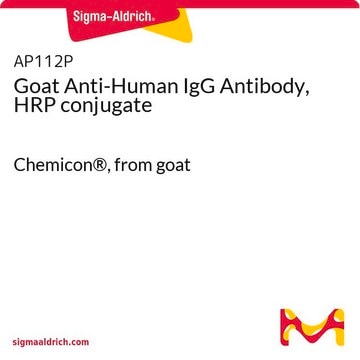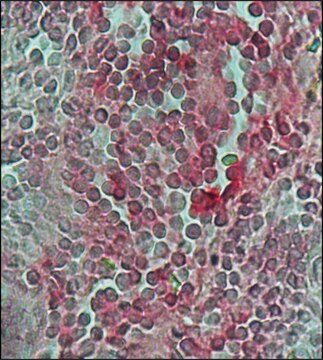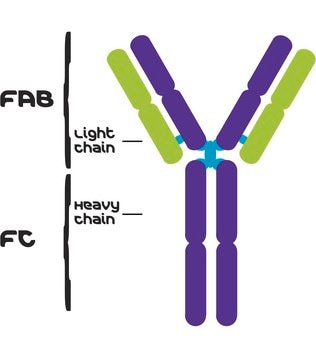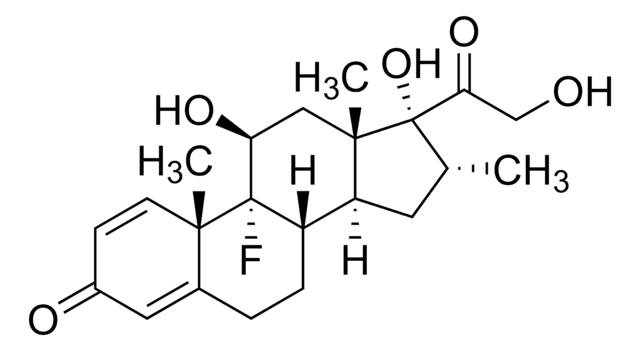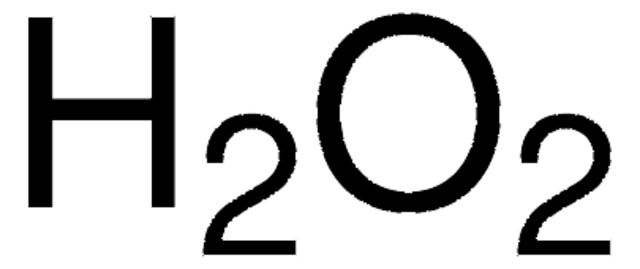AB5589
Anti-Potassium Channel Kv1.3 Antibody, extracellular domain
Chemicon®, from rabbit
Sign Into View Organizational & Contract Pricing
All Photos(1)
About This Item
UNSPSC Code:
12352203
eCl@ss:
32160702
NACRES:
NA.41
Recommended Products
biological source
rabbit
Quality Level
antibody form
affinity purified immunoglobulin
antibody product type
primary antibodies
clone
polyclonal
purified by
affinity chromatography
species reactivity
rat, human
manufacturer/tradename
Chemicon®
technique(s)
flow cytometry: suitable
western blot: suitable
NCBI accession no.
UniProt accession no.
shipped in
wet ice
target post-translational modification
unmodified
Gene Information
human ... KCNA3(3738)
Related Categories
Specificity
Recognizes Kv1.3, extracellular (Kcna3).
Immunogen
Epitope: extracellular domain
Highly purified peptide corresponding to residues 263-275 of human Kv1.3 (Accession P22001).
Application
Research Category
Neuroscience
Neuroscience
Research Sub Category
Ion Channels & Transporters
Ion Channels & Transporters
This Anti-Potassium Channel Kv1.3 Antibody, extracellular domain is validated for use in FC, WB for the detection of Potassium Channel Kv1.3.
Western blotting: 1:200-1:500 using ECL on rat brain membranes.
Indirect flow cytometry: 0.5-5 μg of antibody per 1x10e6cells.
Dilutions should be made using a carrier protein such as BSA (1-3%).
Optimal working dilutions must be determined by the end user.
Indirect flow cytometry: 0.5-5 μg of antibody per 1x10e6cells.
Dilutions should be made using a carrier protein such as BSA (1-3%).
Optimal working dilutions must be determined by the end user.
Physical form
Affinity purified immunoglobulin. Lyophilized from PBS, pH 7.4, containing 1% BSA and 0.05% sodium azide. Reconstitute with 200 μL of sterile distilled water. Centrifuge antibody preparation before use (10,000 x g for 5 min).
Storage and Stability
Maintain lyophilized material at -20°C for up to 6 months after date of receipt. After reconstitution maintain antibody and control peptide at -20°C in undiluted aliquots for up to 6 months. Avoid repeated freeze/thaw cycles.
Analysis Note
Control
Included free of charge with the antibody is 40 μg of control antigen (lyophilized powder). For negative control, preincubate 5 μg of purified peptide with 1 μg of antibody for one hour at room temperature. Optimal concentrations must be determined by the end user.
Included free of charge with the antibody is 40 μg of control antigen (lyophilized powder). For negative control, preincubate 5 μg of purified peptide with 1 μg of antibody for one hour at room temperature. Optimal concentrations must be determined by the end user.
Other Notes
Concentration: Please refer to the Certificate of Analysis for the lot-specific concentration.
Legal Information
CHEMICON is a registered trademark of Merck KGaA, Darmstadt, Germany
Disclaimer
Unless otherwise stated in our catalog or other company documentation accompanying the product(s), our products are intended for research use only and are not to be used for any other purpose, which includes but is not limited to, unauthorized commercial uses, in vitro diagnostic uses, ex vivo or in vivo therapeutic uses or any type of consumption or application to humans or animals.
Not finding the right product?
Try our Product Selector Tool.
Certificates of Analysis (COA)
Search for Certificates of Analysis (COA) by entering the products Lot/Batch Number. Lot and Batch Numbers can be found on a product’s label following the words ‘Lot’ or ‘Batch’.
Already Own This Product?
Find documentation for the products that you have recently purchased in the Document Library.
Luiz O Leiria et al.
The Journal of physiology, 591(9), 2259-2273 (2013-03-13)
We aimed to investigate the role of insulin in the bladder and its relevance for the development of overactive bladder (OAB) in insulin-resistant obese mice. Bladders from male individuals who were involved in multiple organ donations were used. C57BL6/J mice
Zerrin Kuras et al.
PloS one, 7(8), e43859-e43859 (2012-09-07)
The migration of T lymphocytes is an essential part of the adaptive immune response as T cells circulate around the body to carry out immune surveillance. During the migration process T cells polarize, forming a leading edge at the cell
Ameet A Chimote et al.
The Journal of biological chemistry, 287(3), 2055-2067 (2011-12-03)
Hypoxia in solid tumors contributes to decreased immunosurveillance via down-regulation of Kv1.3 channels in T lymphocytes and associated T cell function inhibition. However, the mechanisms responsible for Kv1.3 down-regulation are not understood. We hypothesized that chronic hypoxia reduces Kv1.3 surface
Our team of scientists has experience in all areas of research including Life Science, Material Science, Chemical Synthesis, Chromatography, Analytical and many others.
Contact Technical Service